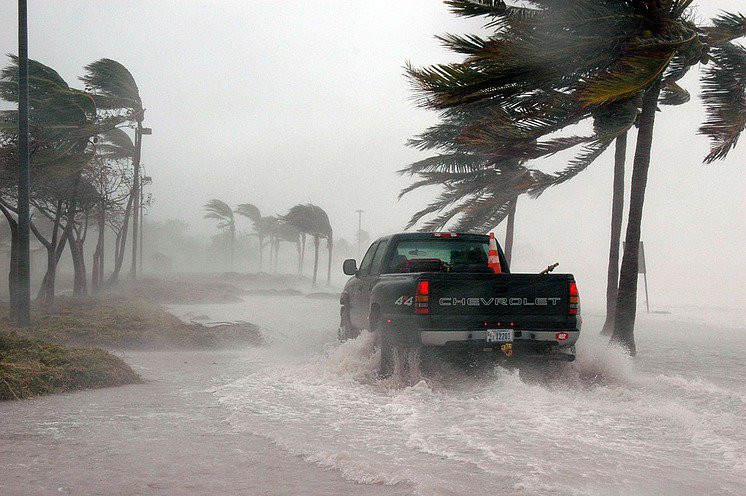Driving during a hurricane can be extremely dangerous, presenting a variety of hazards that require careful navigation and a heightened sense of awareness. Whether it’s heavy rain, strong winds, or flooding, hurricanes can create life-threatening conditions on the road. At Get Drivers Ed, we prioritize the safety of all drivers and believe that being well-prepared can make a significant difference in such challenging situations. In this blog, we will provide essential tips and precautions for driving during a hurricane, emphasizing the importance of drivers ed in ensuring safety on the road.
Understanding the Risks
Driving during a hurricane poses several risks, including:
Reduced Visibility: Heavy rain and strong winds can drastically reduce visibility, making it difficult to see other vehicles, road signs, and potential hazards.
Hydroplaning: Water accumulation on the road increases the risk of hydroplaning, where the tires lose contact with the road surface, causing the vehicle to skid uncontrollably.
Falling Debris: Strong winds can cause trees, branches, and other debris to fall onto the road, creating obstacles that are difficult to navigate around.
Flooded Roads: Flooding is common during hurricanes and can obscure the road, making it hard to judge its condition and depth. Driving through flooded areas is extremely hazardous and can lead to vehicle damage or being swept away by strong currents.
High Winds: Strong winds can make it challenging to maintain control of the vehicle, especially for larger vehicles such as trucks and SUVs.
Essential Tips for Driving During a Hurricane
Avoid Driving If Possible: The safest option during a hurricane is to avoid driving altogether. Stay indoors and only venture out if absolutely necessary. If you must drive, ensure that you are fully aware of the weather conditions and any advisories or warnings issued by local authorities.
Stay Informed: Keep updated with the latest weather reports and emergency broadcasts. Use a reliable weather app or listen to the radio to stay informed about the hurricane’s progress and any road closures or evacuations.
Prepare Your Vehicle: Before heading out, ensure your vehicle is in good condition. Check the tires, brakes, windshield wipers, and lights. Make sure you have a full tank of gas, as power outages can make refueling difficult.
Plan Your Route: Plan your route carefully, avoiding areas prone to flooding or known for heavy traffic. Stick to major roads and highways, which are more likely to be monitored and cleared by emergency services.
Drive Slowly and Cautiously: Reduce your speed significantly to maintain better control of your vehicle. Slow driving also reduces the risk of hydroplaning and gives you more time to react to any obstacles or hazards on the road.
Use Headlights and Hazard Lights: Turn on your headlights to improve visibility and make your vehicle more visible to others. Use your hazard lights if you are driving very slowly or have to stop unexpectedly.
Maintain a Safe Distance: Increase the distance between your vehicle and the one in front of you to allow more time to react. Wet and slippery roads can increase stopping distances, so it’s crucial to maintain a larger buffer zone.
Avoid Flooded Areas: Never attempt to drive through flooded roads. The water may be deeper than it appears, and you risk getting stuck or being swept away. Turn around and find an alternate route if you encounter flooding.
Be Prepared for Emergencies: Carry an emergency kit in your vehicle that includes essentials such as a flashlight, batteries, a first-aid kit, bottled water, non-perishable food, and a portable phone charger. Having these items can be invaluable if you get stranded or face an emergency.
Stay Calm and Focused: Driving in a hurricane can be stressful, but it’s essential to stay calm and focused. Avoid distractions and keep both hands on the wheel. Stay alert for any sudden changes in the road or weather conditions.
The Role of Drivers Ed in Hurricane Preparedness
At Get Drivers Ed, we believe that comprehensive drivers education is crucial for preparing drivers to handle adverse weather conditions, including hurricanes. Our drivers ed program includes:
Defensive Driving Techniques: Learn how to anticipate and react to potential hazards on the road, which is especially important during a hurricane.
Emergency Preparedness: Understand how to prepare for and respond to various emergencies, both on and off the road.
Real-World Scenarios: Gain practical experience through simulations and real-world examples, helping you develop the skills needed to drive safely in challenging conditions.
Experienced Instructors: Our instructors are experienced professionals dedicated to teaching safe driving habits. They provide personalized feedback and support, helping you improve your skills and gain confidence behind the wheel.
Conclusion: Stay Safe with Get Drivers Ed
Driving during a hurricane is fraught with risks, but being well-prepared can make all the difference. At Get Drivers Ed, we are committed to providing comprehensive and engaging education that equips drivers with the skills and knowledge needed to navigate any driving situation safely.
Investing in drivers ed is a smart decision that can save lives and prevent accidents. Enroll in our drivers ed course today and take the first step towards becoming a safer and more responsible driver. Remember, a well-educated driver is a safe driver, and with Get Drivers Ed, you’re in good hands. Drive smart, drive safe, and be prepared with Get Drivers Ed.


